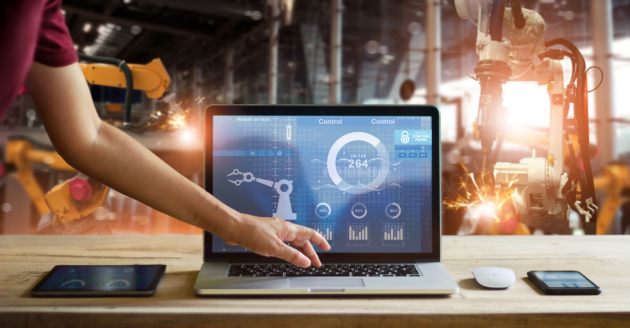
Why harnessing smart manufacturing is a no-brainer
by Arjun Chandar, Founder and CEO of IndustrialML, Inc.
Those who rely on intelligent manufacturing will benefit from less scrap and can devote a greater percentage of uptime to the production line.

Those who rely on intelligent manufacturing will benefit from less scrap and can devote a greater percentage of uptime to the production line.
The manufacturing industry is at a point where a digital revolution is essential. 83% of manufacturers say the pandemic has changed their viewpoint – adopting smart manufacturing technologies and processes has become a top priority. Machine learning is a crucial element of smart manufacturing. One of its most discernible impacts in the manufacturing space is its capacity to increase efficiency without significantly changing existing resources.
Factories that utilize smart devices on the factory floor can assess product quality instantly. For example, video streaming devices integrated with ML can analyze a product throughout the entire production process. Adopting these Industry 4.0 techniques such as ML brings about immediate gains in efficiency and savings that can potentially measure in the hundreds of millions of dollars every year. Let’s take a closer look at three huge benefits that smart manufacturing brings.
Stimulating environmentally-friendly manufacturing
Manufacturing, logistics, and building materials are some of the leading producers of greenhouse gas emissions. However, with the adoption of smart manufacturing, the industry is well-placed to counteract these negative climate effects.
Many sectors of manufacturing suffer from wasted materials and loss of energy in the production process. For example, almost two tons of CO2 are emitted across the supply chain per tonne of steel produced, and 9% of global greenhouse gas is emitted during cement and steel production.
Smart sensors can track data and produce real-time analysis, allowing workers to identify issues such as poor quality earlier and reducing scrap. This means significantly less power consumption and wasteful burning of materials. Many manufacturers still pursue the shift to cleaner production very hesitantly. Still, improved efficiency, less energy consumption, and reduced emissions are all outcomes that will allow factories to feel confident about shifting emphasis.
Cost Control from Extending Machine Lifetime
The more that a manufacturer can regulate the energy draw of their machinery, the fewer unnecessary emissions there will be. Predictive maintenance of these machines allows maintenance controllers to extend their life. Because smart manufacturing software monitors performance in relation to required operating performance, equipment does not need to be hastily replaced. For example, in a meat manufacturing plant, the number of slices needed for particular cuts of meat could be monitored and the settings adjusted to prolong the machine’s life.
Elevating production rates to a higher level
Smart design tools like generative design, an explorative and iterative process to achieve/deliver/identify better outcomes, can have a positive effect on the productivity of a factory. Computer-aided design (CAD) companies have already built algorithms that allow input settings or functional requirements for a product to be created in the specification stage. This differs from many smart manufacturing tools that try to improve a part that has already been designed. If more factories make this change to smarter design, it could significantly impact production and cost reduction.
Those who rely on intelligent manufacturing will benefit from less scrap and can devote a greater percentage of uptime to the production line. Often, factories don’t have enough workers for the tasks they need to do, as people are the most expensive resource. With the help of machine learning, factories can easily monitor worker productivity and more quickly assess which areas they need to improve. For example, in an assembly line for printed circuit boards, a factory could measure how many parts a worker has produced and measure it against their colleagues over time.
Needless to say, smart manufacturing solutions vary in their complexity, for example, implementing smart sensors to lower scrap is easier than using generative design. Manufacturing technologies are full steam ahead. Those who jump on industry-wide trends early enough will ensure their place at the forefront.